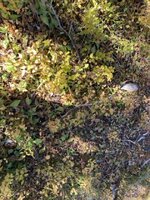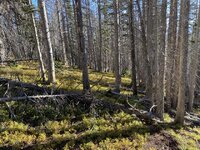COJoe
WKR
This past elk hunt in October in Colorado, I noticed a couple areas I was still hunting through had this ground cover/plant growing and both times I also saw mule deer or fresh sign around. One area, at about 10,500 feet I was walking through some timber with a lot of beetle killed spruce trees so the sun was able to shine through to the forest floor which was covered in this plant. In that area I saw about five mule deer with one pretty nice buck which ran off like a runaway freight train. The couple does that were with him just continued walking slowly away while eating. Farther along I saw a couple more mule deer bucks. Later that day in a different area about a 1/2 mile away and starting at 11,700 feet, I made my way down a finger between two small drainages with more timber but more of a shaded area and these plants were growing there too. I didn't see any mule deer but lots of very fresh sign and trails where they were obviously walking through.
My question is can anyone identify this plant and do mule deer commonly eat it? There seemed to be a correlation between the two but it may have just been a coincidence. I am including a link to an interesting video on what do bear, elk and mule deer eat in the mountains but it didn't talk about this plant. Thanks for any input, now I need to put in for my mule deer tag for that area but it's a tough one to get.



My question is can anyone identify this plant and do mule deer commonly eat it? There seemed to be a correlation between the two but it may have just been a coincidence. I am including a link to an interesting video on what do bear, elk and mule deer eat in the mountains but it didn't talk about this plant. Thanks for any input, now I need to put in for my mule deer tag for that area but it's a tough one to get.



